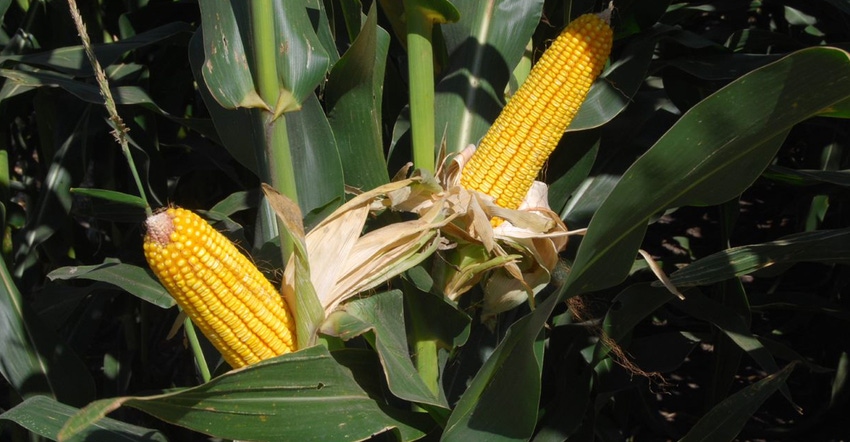September 17, 2019

Planting delays in Iowa last spring could prevent a significant portion of this year’s corn crop from maturing on time. That means farmers may still have corn to harvest deep into November, as they attempt to give their cornfields as much time to dry down as possible.
An early freeze could stop a portion of the corn crop from reaching maturity, and farmers will watch temperatures closely in the coming weeks. In addition to lower yields, a corn crop killed before fully maturing also requires more drying, an increased expense when farmers can least afford it.
Farmers across the state struggled to get their crops planted last spring due to cold and wet weather, notes Iowa State University Extension agronomist Mark Licht. Farmers made the most of a few short stretches in April and May during which field conditions improved enough to plant their crops, but around 20% of Iowa’s corn crop was planted after June 2. Soybeans, which require a shorter growing season than corn, largely have caught up this summer, but much of Iowa’s corn crop remains about two weeks behind an average year.
Later-than-normal freeze needed
“Things are so delayed that unless we have a very late first freeze, some crops will be damaged somewhat this year for harvest,” Licht says.
Dennis Todey, director of USDA’s Midwest Climate Hub at ISU, says it’s likely some percentage of Iowa’s corn will not reach proper maturity by the time farmers have to harvest their crops, but it remains to be seen how big of a percentage that will be. Warm temperatures the next few weeks could accelerate maturation for much of the corn in question, but extended forecasts are predicting slightly lower temperatures than average in September.
The date when the first freeze occurs also could impact the maturation of this year’s corn crop, Todey says. A hard freeze during which temperatures fall below 28 degrees F essentially shuts the plants down and prevents them from maturing any further.
Northern counties in Iowa usually experience the first freeze in early October, while southern counties typically experience the initial freeze later, often around the third week of October. “A particularly early freeze could prevent a significant portion of Iowa’s corn crop from reaching maturity,” he adds.
Crop running 2 weeks behind
Sotirios Archontoulis, an ISU agronomy professor who works with weather and crop modeling, says the slow spring planting and prevailing cool weather could affect the quality of the corn crop, even in fields that reach full maturity.
The delay in the start of the grain-fill period by two weeks this year means the 2019 crop experienced less daylight and soaked up less solar radiation, which drives photosynthesis and yield. That can lead to suboptimal growth in the plants, causing small kernels and lower test weight, even if overall yields look good, Archontoulis says.
“We’re two weeks behind now, with cool weather on the way as we move further into September,” he says. “There’s some concern growing.”
Northern Iowa typically sees a first fall freeze in early October that pushes to southern Iowa by the end of October. Temperatures below 28 degrees F will pretty much kill corn and soybean plants.
“Farmers are hoping for a freeze closer to Halloween,” says Justin Glisan, state climatologist at the Iowa Department of Agriculture. Although it’s too early to forecast a crop-killing freeze, those first fall freezes have come later than normal in recent years, he notes.
Corn kernels need more time to fill
Normally, corn kernels would be fully filled around mid-September, Licht says. But this year, Iowa needs a couple more weeks for the plants to fill the kernels and add weight. For much of the crop, kernel fill isn’t likely to be complete until the end of September or in early October. “Without a late freeze, many farmers will see smaller, lighter kernels,” he adds. “The later a farmer planted, the greater the yield penalty will be.”
USDA’s September crop production report, released Sept. 12 and based on conditions as of early September, forecasts Iowa corn production at 2.52 billion bushels this year. Yields are expected to average 191 bushels per acre, unchanged from the August forecast, but down 5 bushels per acre from last year.
Soybean production is forecast at 493 million bushels for Iowa in 2019. The yield is forecast at 54 bushels per acre, down 1 bushel per acre from the August forecast, and 3 bushels per acre lower than in 2018. The next USDA corn and soybean production forecasts, based on conditions as of early October, will be released on Oct. 10.
About the Author(s)
You May Also Like






